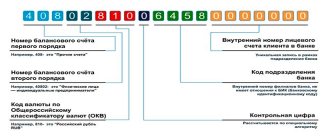How does KBK stand for?
KBK - budget classification codes
The organizations' BCCs, which are necessary for the payment to go where it was intended, change almost every year. And the responsibility for their correct indication lies with the payer!
Let's try to figure out what these mysterious codes are, why they are needed, how they are formed and why they change regularly. We will also tell you what to do if you find an error in the specified code, and what you risk in this case, and most importantly, how to prevent this risk and not end up with accrued fines and penalties for paying taxes and fees on time.
Contributions of individual entrepreneurs to the FFOMS in 2022 (decoding KBK 18210202103081011160, 18210202103081013160)
When transferring fixed contributions to themselves intended for the FFOMS, entrepreneurs also need to use 2 BCC values depending on the period for which the payment is made. If the payment relates to periods before 01/01/2017, you need to use KBK 18210202103081011160, and if for periods after 01/01/2017, then KBK 18210202103081013160.
Penalties and fines will also be paid accordingly. For periods before 2022, you need to use for them, respectively, KBK 18210202103082011160 and 18210202103083011160. And when paying for periods from 01/01/2017, KBK 18210202103082013160 and 18210202103083 will be used 013160.
Current list of KBK for 2022
KBC for paying insurance premiums for individual entrepreneurs for themselves
KBK for payment of insurance premiums for employees
BCC for payment of simplified tax system
KBK for payment of UTII
BCC for payment of unified agricultural tax
KBK for VAT payment
KBK for personal income tax payment
KBK for payment of income tax
BCC for patent payment for individual entrepreneurs
KBK for payment of trade tax
KBK for payment of transport tax
KBK for payment of property tax
KBK for payment of land tax
KBK for payment of water tax
KBK for payment of mineral extraction tax
KBK for payment of state duty
KBC for payment of fees
KBK for payment of excise taxes
KBC for payment of monetary penalties (fines)
KBK for payment of other payments
Budget classification - what is it and why?
In July 1998, the Budget Code of the Russian Federation in Federal Law No. 145 first introduced the term “KBK”, used as a means of grouping the budget.
There are 4 types of KBK:
- relating to government revenues;
- related to expenses;
- indicating the sources from which the budget deficit is financed;
- reflecting government operations.
What are KBKs used for?
- organize financial reporting;
- provide a unified form of budget financial information;
- help regulate financial flows at the state level;
- with their help, the municipal and federal budget is drawn up and implemented;
- allow you to compare the dynamics of income and expenses in the desired period;
- inform about the current situation in the state treasury.
INFORMATION FOR ENTREPRENEURS! KBK is an internal coding necessary, first of all, for the state treasury, where the distribution of incoming funds takes place. Entrepreneurs need these codes insofar as they are interested in complying with the requirements for processing government payments, especially taxes and contributions to extra-budgetary funds. Therefore, do not forget to indicate the correct and current KBK code in field 104 of the payment receipt.
Structure of the KBK
This code consists of 20 characters - numbers, separated by hyphens into groups, it has the following form XX - X XX XX XXX XX - XXXX - XXX.
Each group of characters corresponds to an encrypted meaning determined by the Ministry of Finance. Let's consider the structure of the profitable BCC, since they are the ones that entrepreneurs mainly have to use (expense codes can be found mainly when returning funds under any government program).
- "Administrator" . The first three signs show who will receive the funds and is responsible for replenishing this or that part of the budget with them, and manages the received money. The most common codes for businessmen begin with 182 - tax authority, 392 - Pension Fund, 393 - Social Insurance Fund and others.
- "Type of income" includes signs from 4 to 13. This group of signs helps to fairly accurately identify receipts based on the following indicators:
- group – 4th character (that is, the first in this paragraph);
- subgroup – 5th and 6th characters; a two-digit code indicates a specific tax, duty, contribution, fine, etc.;
- article – category 7 and 8 (the value of the purpose of the received income is encoded in the settlement documents for the budget of the Russian Federation);
- subarticle – 9, 10 and 11 characters (specifies the item of income);
- element - 12 and 13 digits, characterizes the budget level - from federal 01, municipal 05 to specific budgets of the Pension Fund - 06, Social Insurance Fund - 07, etc. Code 10 indicates the settlement budget.
- “Program” - positions from 14 to 17. These numbers are designed to differentiate taxes (their code is 1000) from penalties, interest (2000), penalties (3000) and other payments (4000).
- “Economic classification” – last three digits. They identify revenues in terms of their economic type. For example, 110 speaks of tax revenues, 130 - from the provision of services, 140 - funds forcibly seized, etc.
IMPORTANT INFORMATION! The 20-digit code must be entered correctly and without errors in the “Purpose of payment” field (field No. 104) of the payment order. In fact, it duplicates the information indicated in the “Base of payment” field, as well as partially in the “Recipient” and “Recipient’s current account” fields.
Decoding KBK 18210102010011000110
Using code 182 1 0100 110, tax agents pay to the budget personal income tax withheld from payments to employees. This is indicated by the code numbers.
The number “182” at the beginning indicates that the tax is administered by the Federal Tax Service, so it is the tax office that will be indicated by the recipient on the payment slip. The numbers “01” indicate that income is taxed, and tax revenues of the budget system are generated through the payment.
The number “1000” means that the main payment is paid according to the code. If you need to pay penalties or fines for personal income tax, you should use codes with the numbers “2100” and “3000”, respectively:
- for penalties - 182 1 01 02010 01 2100 110;
- for fines - 182 1 01 02010 01 3000 110.
Why are budget classification codes changing?
This is the cry from the heart of the vast majority of entrepreneurs: how much easier it would be if these codes were uniform and established once and for all. But the Ministry of Finance makes certain changes to the BCC almost every year. Entrepreneurs and accountants do not always have the opportunity to timely monitor innovations and correct the specified BACs, this is especially evident during reporting periods. Responsibility for incorrectly specified code lies entirely on the shoulders of businessmen, which often results in unexpected expenses and hassle in correcting the error and proving that they are right.
There are various versions put forward by entrepreneurs and the Ministry of Finance and the Ministry of Justice do not comment in any way.
- The more receipts passed through incorrect BCCs, the more funds will be “suspended” for some time as unknown. Until errors are corrected, they can be used for unseemly purposes, and on a national scale this is a huge amount.
- Additional filling of the budget by charging fines and penalties for “overdue” payments that were made through the already inactive BCC. Proving timely payment is quite troublesome.
- Inconsistency between the actions of the Ministry of Finance, which assigns codes, and the Ministry of Justice, which approves them.
- Since the KBK is directly “tied” to the public sector, any changes within the relevant structures, the receipt of new directives, etc. lead to a change in coding.
FOR YOUR INFORMATION! There are opinions that since this coding is an internal matter of the Treasury, it should be done by them, and not by taxpayers. The KBK code can be assigned by bank employees based on the specified data about the recipient and purpose of the payment, or by treasury employees upon receipt of it. However, today the additional work of coding is placed on the shoulders of payers; they cannot avoid it, which means that all that remains is to comply with the current requirements and keep abreast of the latest innovations.
What are the consequences of an error in the KBK?
If the payment purpose code is specified incorrectly, the payment will be transferred to the budget, but it will not be distributed correctly there, which means that the state will not actually receive it. The result may be the same as if the money had not been transferred at all: the tax office will count the arrears under a certain item. At the same time, if the BCC is simply mixed up, there may be an overpayment under another item.
As a result, the tax office will issue a demand for payment of arrears, a fine for late payment of tax or a fee and penalties for late payment. This situation is extremely unpleasant for a conscientious entrepreneur who paid the tax on time, whose entire fault lies in confusion with numerous CBCs.
The usual procedure for an entrepreneur when an error is detected in the KBK
- The most important thing is to make sure that the error did not lead to non-receipt of income to the budget, otherwise it will be considered that the funds were not paid, with the payer being fully responsible for this.
- Submit to your tax accounting office a statement about the detected error and a request to clarify the basis, type and affiliation of the transfer of funds, if necessary, the tax period or tax payer status.
- The application must be accompanied by payment orders for which the tax was paid and received by the budget.
- If necessary, a reconciliation of paid taxes is carried out jointly with the inspector (a report is drawn up about it).
- After a few days (the period is not defined by law), a decision is made to clarify this payment and is handed over to the applicant.
IMPORTANT! When a payment is clarified, it is considered completed on the day the payment order is submitted with an incorrect BCC, and not on the day the decision on clarification and offset is received. Thus, the delay in mandatory payment, which provides for penalties, does not actually occur.
Let's look at various cases that occur due to errors in the CBC and analyze what an entrepreneur should do.
- The inspectorate assessed penalties for non-payment of taxes . If there was a beneficial request from the payer to offset the amount paid, then you should additionally ask the tax office to recalculate the accrued penalties. If the tax office refuses to do this, going to court will most likely allow for a recalculation (there is a rich case law with similar precedents).
- The BCC does not correspond to the payment specified in the assignment . If the error is “within one tax”, for example, the KBK is indicated on the USN-6, and the payment basis is indicated on the USN-15, then the tax office usually easily makes a re-offset. If the KBK does not completely correspond to the basis of the payment, for example, a businessman was going to pay personal income tax, but indicated the KBK belonging to the VAT, the tax office often refuses to clarify, but the court is almost always on the side of the taxpayer.
- Due to an error in the KBK, insurance premiums were unpaid . If the funds do not reach the required treasury account, this is almost inevitably fraught with fines and penalties. The entrepreneur should repeat the payment as quickly as possible with the correct details in order to reduce the amount of possible penalties. Then the money paid by mistake must be returned (you can also count it against future payments). To do this, an application is sent to the authority to whose account the money was transferred erroneously. Failure to comply with a request for a refund or re-credit is a reason to go to court.
- The funds entered the planned fund, but under the wrong heading . For example, the payment slip indicated the KBK for the funded portion of the pension, but they intended to pay for the insurance portion. In such cases, contributions are still considered to have been made on time, and you must proceed in the same way as under the usual procedure. The court can help with any problems with a fund that refuses to make a recalculation, and an illegal demand for payment of arrears and the accrual of penalties.
REMEMBER! According to the law, an error in the KBK is not a reason for which the payment will not be considered transferred. The payment order contains additional information indicating the purpose of the payment and its recipient, therefore, if it is indicated correctly, there is and cannot be a reason for penalties against the entrepreneur; other decisions can be challenged in court.
Main BCCs for taxes and contributions in 2022: list, explanation
The most used in 2022 are KBK, necessary for modern Russian individual entrepreneurs and business entities dealing with payment:
- Personal income tax for hired employees (KBK 18210102010011000110 - for income up to 5 million rubles, KBK -18210102080011000110);
- income tax (regional KBK - 18210101012021000110, federal - 18210101011011000110);
For details, see the material “KBK when paying income tax.”
- simplified tax system (KBK under the “income” scheme - 18210501011011000110, under the “income minus expenses” scheme - 18210501021011000110);
- VAT (KBK for tax 18210301000011000110, penalties - 18210301000012100110, fines - 18210301000013000110);
- fixed contributions to mandatory pension insurance (KBK18210202140061110160);
- contributions to mandatory pension insurance for employees (KBK 18210202010061010160);
- fixed contributions for compulsory medical insurance (KBK 18210202103081013160);
- contributions to compulsory medical insurance for employees (KBK 18210202101081013160);
- contributions for compulsory insurance in case of temporary disability and in connection with maternity (KBK 18210202090071010160);
- contributions to the Social Insurance Fund for occupational injuries (KBK 39310202050071000160);
- voluntary fixed contributions to the Social Insurance Fund (KBK 39311706020076000180).
See also “KBK for insurance premiums - table”.
ConsultantPlus experts collected all the KBK, incl. not listed in our article, in the Ready-made solution and explained the nuances of using codes in each specific case. Study the material by getting trial access to the K+ system for free.





